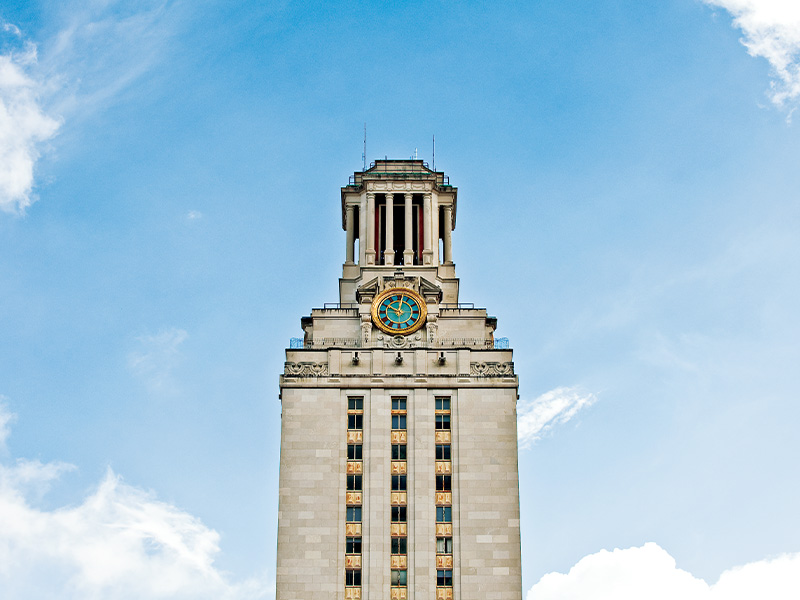
After applying a much larger load than expected, engineers at the Ferguson Structural Engineering Laboratory successfully collapsed a 120-foot bridge with an intentionally fractured girder.
But it wasn’t an easy task.
It required two rounds of testing in March before the damaged bridge finally failed under an applied load of more than 360,000 pounds. The bridge, tested to determine its vulnerability to collapse following the fracture of a girder, withstood about 4.5 times the maximum legal truck load. Associate Professor Eric Williamson and Professor Karl Frank led the research team that conducted the test.
“The bridge demonstrated excellent performance in its ability to carry loads, even after suffering extensive damage,” Williamson said.
Frank added: “The ability of the bridge to sustain the heavy load, even after it had suffered a simulated, full-depth fracture of one of the girders, demonstrated the toughness of the bridge system.”
Nearly 300 strain gauges and displacement transducers recorded how the bridge reacted in this extremely damaged condition to incrementally increasing loads during the two rounds of testing. The data will be used to develop analytical methods that engineers can apply to assess the behavior and safety of the many twin-girder steel bridges in the state’s transportation system.
The test was part of a research project to determine the collapse vulnerability of twin box girder bridges in the event of a complete fracture of one of the girders. Structural engineers consider these bridges “fracture critical” because they are expected to collapse if one of their girders fractures.
Twin box girder bridges are often used in freeway interchanges when long, curved spans are required, such as the one at Interstate 35 and Highway 290 in Austin. More than two years ago, the laboratory’s test bridge, which was removed from the interchange of Interstate 10 and Loop 610 in Houston, was tested to see the effects of a brittle fracture in the bottom flange of one girder, but it suffered only minimal damage.
A second experiment was performed in June 2008 to simulate a full-depth, dynamic fracture, where a jack system supporting the weight of the fractured girder was dynamically removed by severing its tension ties with high explosives. In response, the bridge deflected about eight inches downward, causing significant damage in the connection between the fractured steel girder and the concrete deck. Before collapse-level damage could be suffered, however, the expansion joints in the railings above the concrete deck closed, and the railing acted as additional support beams for the crippled bridge. The March test loaded the bridge in that damaged state.
The Texas Department of Transportation and the Federal Highway Administration funded the research.
